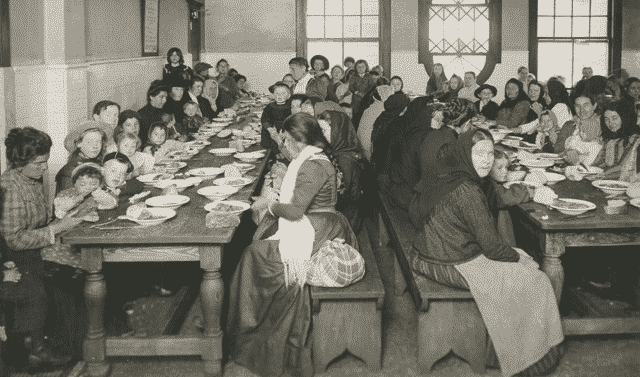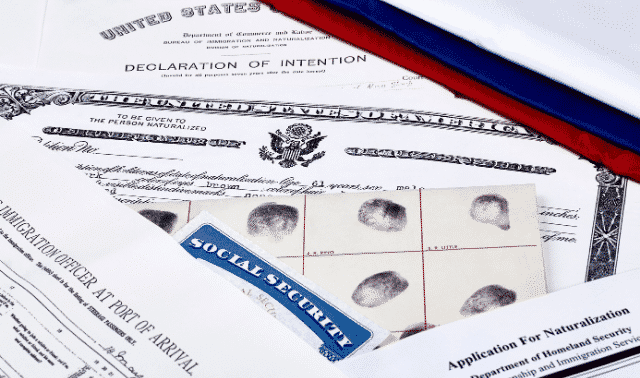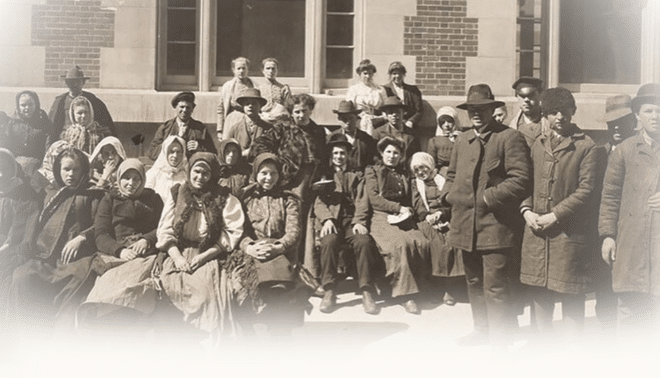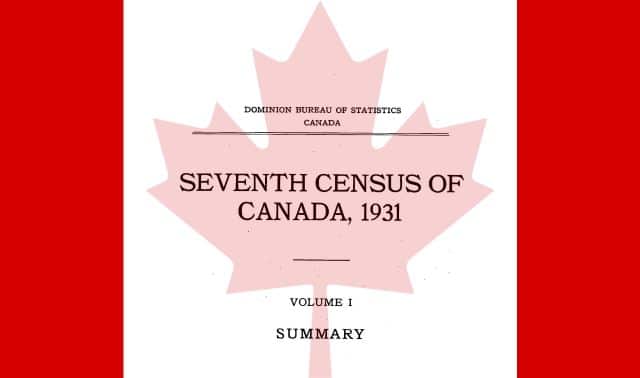Sign up for the Family Tree Newsletter Plus, you’ll receive our 10 Essential Genealogy Research Forms PDF as a special thank you!
Get Your Free Genealogy Forms
"*" indicates required fields
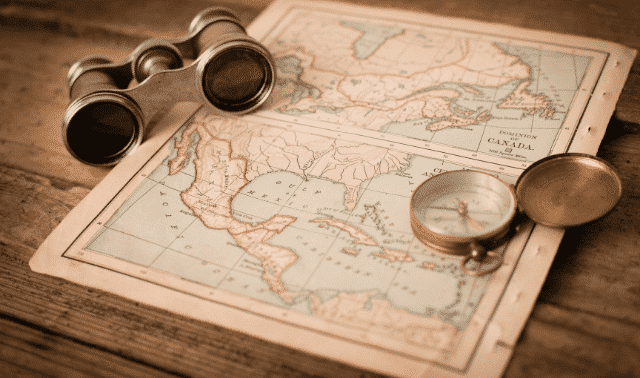
In years past, millions of US immigrants arrived by ship at East and West Coast ports—so many that it’s easy to ignore other travel routes. But a significant number arrived from the North or South by land, including many who weren’t from Canada or Mexico at all. In fact, beginning in the 1880s, many European and Asian immigrants found it easier to enter the United States over land than by sea.
Relatives also may have crossed US land borders for reasons other than immigration. Thousands of workers did so for business or seasonal work. Some vacationed over the line or hopped the border to marry at destinations such as Niagara Falls, Canada. And reaching further back in time, some of our Spanish, British or French ancestors came from the south or north before US borders existed.
If you suspect your ancestor crossed national boundaries or you can’t find evidence of an immigrant’s arrival at a seaport, we’ll show you how to research records that document these migrations.
‘Immigration’ Before Borders
“A big portion of my ancestors [from Mexico] didn’t come to the United States: the United States came to them,” says Colleen Greene, a librarian, university instructor and author of Mexican and Hispanic genealogy guidebooks. “They were already living there when our present-day borders were finalized.”
“The same applies to a large percentage of our ‘immigrant’ ancestors,” she continues. “They migrated into what was still colonial Spain, or Mexico after it obtained independence and before it lost a third of its land to the United States.” Colonial Spanish settlements in the American Southwest are some of the oldest European-founded towns within US boundaries today. Juan de Oñate’s expedition into what is now New Mexico dates to 1598, and the city of Santa Fe was founded in 1610.
Canada and the Early Midwest
From the north, French-Canadian trappers and traders began settling the greater Midwest in the 1600s. French troops founded Detroit, Mich., on the shores of Lake Erie in 1701. French Acadian exiles fled Nova Scotia in the mid-1700s for new homes in New England or further south, including to Louisiana, where their descendants became known as Cajuns. Traffic didn’t just flow south, though. For example, during the Revolutionary War, about 35,000 British Loyalists bolted north to Upper Canada (the northern shores of the Great Lakes). Some later returned to the United States.
Spreading South and West
The new nation emerged from the Revolution with its land doubled, and growth continued. The Northwest Ordinance in 1787 formalized settlement of the Great Lakes region. In 1803, the Louisiana Purchase added what’s now Montana, the Dakotas, the rest of Minnesota, and a narrowing swath of land south to Louisiana. Spanish cessions in 1819 added Florida and part of Louisiana.
In the mid-1800s, the country finally reached the Pacific Ocean, creating new borders with Mexico, extending the 49th parallel boundary with Canada, and finalizing most of its modern boundaries. Sometimes, the French, Spanish, indigenous and other residents already living in each of these areas fought for respect of person and property. Other times, they left, were killed or were driven out.
Studying Social History
Learning the history of these regions during your ancestor’s lives can help you better understand what may have happened to them—and where to look for related records. For example, says Greene, “Part of the terms of the Treaty of Guadalupe-Hidalgo [with Mexico] in 1848 were that Mexican citizens living on the US side of the border had the choice of either becoming US citizens or returning to what became Mexico. Their land rights were supposed to be protected and respected after that change, but that didn’t happen.”
In these cases, record availability and access depend on the time and who had jurisdiction over the place in question. Land and other records may be in US state archives, library and university collections, or foreign archives. Look for guidebooks and articles covering research in an ancestor’s time and place. Consulting historical maps of the area during times of border transition can help. If you’ve tested your DNA with AncestryDNA, study the list of migratory communities suggested by your test results to see whether any may pertain to your family.
Understanding National Borders
The nation’s boundaries gradually settled into place, but they were porous. Industries throughout the country recruited laborers from overseas. The government welcomed immigrant homesteaders to help fill its western lands. Immigrants poured in by the millions.
Unchecked Borders
Throughout the early-to-mid 1800s, they entered and departed the United States relatively unchecked, including at land borders. Political refugees came from Canada in the 1830s, and from Mexico about 80 years later. The Mexican government sponsored US settlers in what became Texas. Prospectors rushed to the California gold fields in the 1840s and 1850s, and then to Alaska—via Canada—a half century later. Escapees from slavery followed the Underground Railroad to freedom in Canada. Homesteaders of all nationalities flocked to western lands in the United States. In the late 1800s, Mormon settlers of Utah colonized parts of both Canada and Mexico.
During this time, your ancestors may have rejoiced in their relative freedom of movement. However, the lack of records can make tracing them difficult. Try these strategies:
- For historical context that can help you identify their migratory group, consider reading a good history of border migration, such as Crossing the 49th Parallel: Migration from Canada to the United States, 1900–1930 by Bruno Ramirez (Cornell University Press) or North from Mexico: The Spanish-Speaking People of the United States, 3rd edition, by Carey McWilliams, Matt S. Meier and Alma M. Garcia (Praeger).
- Seek research guides for your ancestor’s migratory group. Examples include A Guide to Mormon Family History Sources by Kip Sperry (Ancestry) or Finding Your [Alaska] Gold Rush Relative.
- Contact genealogical societies and libraries in your ancestors’ areas to ask about resources on early pioneers, including lineage society applications filed by other descendants.
Immigration Restrictions (and Workarounds)
In 1882, Congress passed the Chinese Exclusion Act, reinforcing earlier restrictions against Chinese workers. Then the Immigration Act of 1882 added restrictions for other groups. Those barred from entry into the country included convicts and people judged to be insane, mentally handicapped or unlikely to be financially self-sufficient. Later laws excluded anarchists and polygamists.
Initial immigration control efforts focused on ship passengers. After all, that’s where the greatest numbers were arriving. It was easier to monitor ship traffic at designated ports of entry than to monitor land borders against individual travelers. The main US-Canadian border is nearly 4,000 miles long (plus another 1,500 miles along the boundary with Alaska, which the United States acquired in 1867). The Mexican border runs nearly 2,000 miles, much of it across a desert. That’s a lot of possible crossing points.
Immigrants quickly recognized land borders as a “backdoor” entry option. During the 1880s, hundreds of thousands of US-bound European immigrants booked passage to Canada and then came south to cross the border. Greene says a similar phenomenon occurred in Mexico, with European and Asian travelers.
In 1895, US officials began cooperating with the Canadian government and with shipping and railroad lines to document ship passengers to Canada who declared their intention to continue to the United States. Between about 1895 and 1906, immigration inspection stations (“land ports”) opened along borders with Canada and Mexico.
Due to the sheer length of the borders, though, they remained unsecured. Inspection stations often opened only in high-traffic areas. And, at least in the early years of border inspection, travelers didn’t have to prove who they were or where they came from. Before the 1930s, if admissible persons told inspectors they planned to stay in the United States for less than six months, they may not have been documented at all. So entering the country by land continued to be a preferred option for those worried about rejection if traveling by sea.
Eligible workers crossed Canadian and Mexican borders regularly for their jobs well into the 1900s. Some migrated to farm cheap, fertile US acreage; others, to labor on farms. Merchants visited business contacts. French Canadians, including many single women, worked in New England textile factories. Shipbuilding jobs along the Atlantic coast attracted workers from the Maritime Provinces.
By 1930, nearly 3 million Canadians lived in the United States, a huge number considering Canada’s population of just 10 million. Meanwhile, the railroad, mining and agricultural industries recruited heavily from Mexico. In the mid-1900s, the Bracero Program regarding labor agreement brought even more Mexican workers.
Border-Crossing Records
“You won’t find lots of records for earlier migrations,” Greene says. But once border-crossing records begin, you may see lots of back-and-forth. Greene describes a pattern for seasonal employment similar to the “birds of passage” workers from Europe. “Some of my ancestors from that period have eight to 10 crossings over 20 years. You’ll find a man crossing over for six to eight months of work, then returning home for a time, and then another border crossing. Nine months later, a child is born.”
Border-crossing records varied based on the time period, place and the entrant’s citizenship status and planned duration of stay in the United States. Instead of recording travelers on lists, inspection agents created individual cards for each. They used different versions of the cards over time, but all included basic information such as the traveler’s name, age or birth date, sex, national origin, race and US entry date. Sometimes for a single border crossing, you’ll find both a short-form record on a card, and a long-form record on a register. Look at both.
The long-form manifest includes places to note important personal and genealogical details. From these, you might be able to reconstruct a basic physical description of your traveling ancestor (especially if a photo was attached). The names and places provided could help you identify relatives and residences on both sides of the border. You may even discover details that can help you understand the whys and wherefores of their migration stories.
Finding Border-Crossing Records Online
Millions of border-crossing records are searchable on both Ancestry.com and FamilySearch. You can search them all simultaneously at Ancestry.com by clicking the Search tab and choosing Immigration and Travel, then clicking Border Crossings & Passports on the left. At FamilySearch, look under Search>Records. After you search, look on the left to restrict your results by Collection using the Migration and Naturalization filter.
The largest online collections of border-crossing records cover several inspection stations and time periods. Another important collection is “Vermont, St. Albans Canadian Border Crossings” at FamilySearch. This includes partial indexes and record images beginning in 1895, for immigrants who sailed to Canada and declared the United States as their final destination.
Some border-crossing databases are specific to individual border stations, and some include both land and sea arrivals. For example, Ancestry’s collection of Detroit crossings contains about 1.7 million passenger records with both card manifests from border crossings and lists of ship passengers and crew who landed at the port of Detroit. (A fun related collection is the Niagara Falls, Ontario, hotel register, where you may find US relatives vacationing or getting married.)
Finding Family at the Borders
You’ll better recognize your relatives in border-crossing records if you can learn where they crossed. “Pay attention to maps,” advises Greene. “Where were the established settlements and travel routes? Where did the railroads run? I was looking at the border crossing nearest where my family settled in California, based on WWI draft registrations and the 1920 census. [But] they all crossed at Laredo, Texas. I figured out why from a map of the railroads in Mexico. The railroad ran from where they lived directly north to Laredo.”
The Library of Congress collection “Railroad Maps, 1828 to 1900” may prove helpful. Under Location, click More Locations and then select your geographic area of interest (such as Mexico or Ontario).
When searching for relatives with Mexican or Spanish surnames, be aware of naming traditions. Spanish-speaking countries use a dual surname system, with the father’s paternal surname as a person’s primary surname and the mother’s paternal surname as a second surname. “At the border, a woman may have rattled off two surnames, and the official may have recorded the first surname as a middle name,” Greene says. “A child may have crossed with the parent, but been misrecorded under the parents’ second surname, because border agents thought the last surname was the family name.” You might find similar mistakes in compound given names, such as María Elena or José Francisco.
The same principle may apply for border-crossers who originate from any country with distinct naming traditions. French Canadians, for example, might use dit names, which function as second surnames.
Greene advises searching immigration records under all possible name combinations. She adds that once you find a relative’s crossing, you should look for family by searching for all who crossed the same day. “Also, try partial searches on Ancestry,” she suggests. “Enter different partial-name combinations, with whatever other information you know.” Adding a hometown, especially if it was small, can help you find relatives and identify their kin and friends.
When viewing images of border-crossing records, know that they aren’t sorted consistently. They may be alphabetized roughly by surname, and might be further sorted by given name.
Other Migration Factors
Even for the time period when border-crossing records exist, you might stumble into some challenges. Consulting regional, ethnic and migration histories can help you understand what you see (or don’t see) in records. For example, Greene tells of a largely unknown period during the Great Depression called Mexican Repatriation. Between 1929 and 1936, more than one million US citizens (including those by birth) and other residents of Mexican descent were deported to Mexico.
Knowing this history could help you figure out what happened to your family. “Researchers find that their ancestors just disappeared from US records without explanation,” Greene says. “Some eventually came back; a lot stayed away.” This wasn’t an official federal program, so little documentation exists. But Greene says that if your family filed a certificate of residency with a Mexican consulate in the United States prior to leaving, you might find records in the national archives of Mexico.
20th-Century Undocumented Arrivals
Undocumented arrivals increased in the 20th century as laws restricted legal immigration based on country of origin. It’s challenging to trace these people back over the border, in part because their later lives in the United States also may be less documented. “You might find them on a census record, or you might not,” says Greene. “You’re often looking for indirect or negative evidence—gaps in records that should be there—to tell you that this family was flying under the radar, attempting to avoid being noticed by authorities.”
Start by gleaning whatever knowledge you can from living relatives, Greene suggests. Ask about the first relatives to enter the United States, where they came from, when other relatives arrived, what kind of work the family did, what life was like, and how connected the family stayed with relatives at home. If relatives seem anxious about divulging information, you may have to be patient, build trust and accept answers as they become more willing to share.
Some undocumented ancestors eventually naturalized, too. Between 1929 and 1944, immigration officials created Registry Files for naturalizing US residents with undocumented entries or missing entry documents. These files are packed with evidence about the person’s US arrival. Order copies at the US Citizenship and Immigration Services website; under Records Available, click Registry Files.
Catholic Parish Records
For Catholic ancestors, Greene recommends researching US parish records. “Faith was important, and immigrants might not have gone through the process of generating US vital records but would have sought after the sacraments.” Catholic sacramental records of baptism, marriage and extreme unction for the dying often mention overseas hometowns of immigrants.
Benevolent societies also assisted immigrants, generating records in the process. Consider from what churches, ethnic organizations or urban aid societies your family may have sought aid. “The Knights of Columbus provided assistance to Mexican immigrant groups as well as Mexican-Americans,” says Greene. “These can be good leads for undocumented families, especially if you already know your family was affiliated. The records aren’t always accessible or easy to find, and they may not be willing to give you access, but those are good places to look.”
US borders have been busy with traffic for centuries. Knowing your ancestors may have crossed those lines—perhaps multiple times—opens up possibilities for understanding their storied pasts.
A version of this article appeared in the September 2018 issue of Family Tree Magazine.
ADVERTISEMENT



